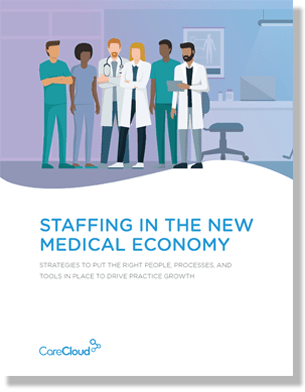As the industry’s adoption rate of health IT solutions continues to skyrocket, so do costs. According to recent data from the Medical Group Management Association (MGMA), medical practices’ annual expenditures per full-time physician on IT costs have climbed from $15,211 in 2008 to $19,439 in 2012, an increase of 27.8%.
But health IT doesn’t have to be so expensive if you harness the power of the cloud to move beyond client-server technologies. Fortunately, cloud-based EHR, practice management and RCM technologies are helping physicians mitigate the rising costs of health IT in three primary ways.
Lower Start-up Costs
As the name suggests, client-server solutions require a physical server to be installed at the point of care. The host practice is responsible for the cost of the server, installation, and any software needed to operate the system. These costs can be hefty for smaller practices – sometimes reaching as much as $40,000.
On the other hand, cloud-based software doesn’t involve any expensive hardware or software installation fees. The only equipment your practice needs are computers and a decent Internet connection. Cloud-based technology vendors typically don’t require any additional start-up costs either, only the first monthly payment at the agreed upon rate.
No IT Staff Needed
Since hardware and software are housed at your practice, choosing client-server software means you’ll need to hire an in-house IT person, or at least have an IT contractor on-hand whenever you have a problem.
Unfortunately, like with any technology, health IT software can go awry at any moment. So, trouble-shooting expenses can add up quickly depending on the quality of your client-server solution.
With cloud-based software, you never have to worry about repair costs. Now, that’s not to say problems will never arise, because again, problems occur with any technology from time to time. But since data is maintained on the cloud, the vendor takes care of repairs remotely rather than having to come to your practice.
Updates/Upgrades Included
Although client-server vendors promote one-time costs as a primary selling point, this pricing can be deceiving. Practices should take into consideration update and upgrade expenses as well. Upgrades normally require paying for new hardware or software plus installation costs.
Cloud-based solutions take care of updates and upgrades automatically. The interconnectivity of cloud-based solutions lets vendors make updates across the network, usually in the early morning hours so as to not disrupt practice workflow.
The best vendors perform updates every couple of weeks or so, meaning your constantly receiving the latest technology at no additional cost.
Although client-server software once had a monopoly on healthcare IT, cloud-based software has given physicians a more cost-effective alternative. So, although costs are rising across the board, you can alleviate some of the financial burdens by turning to the cloud.




